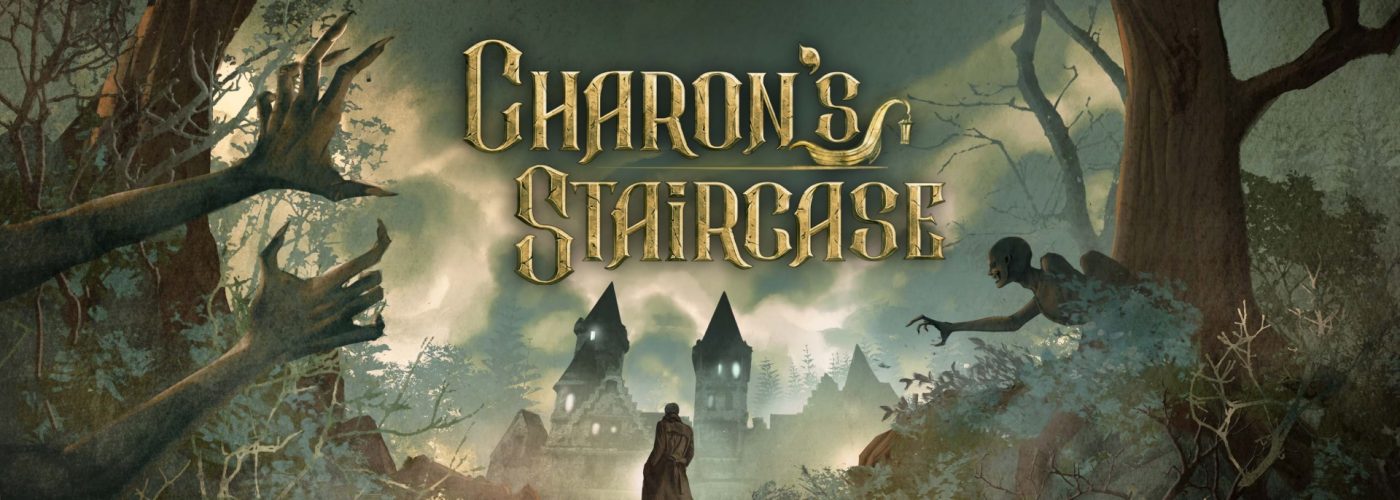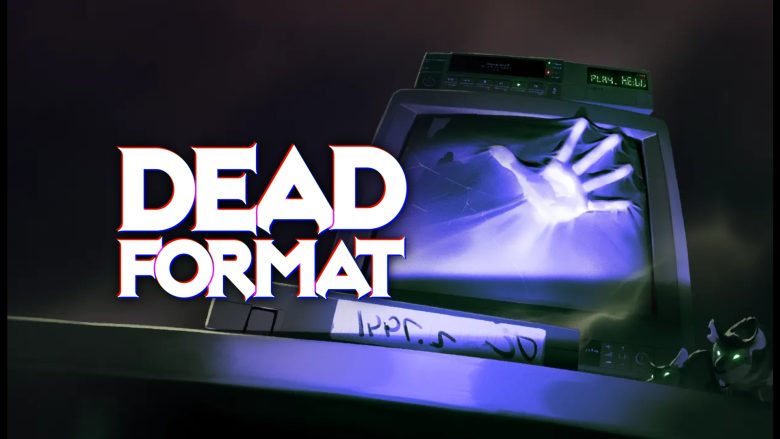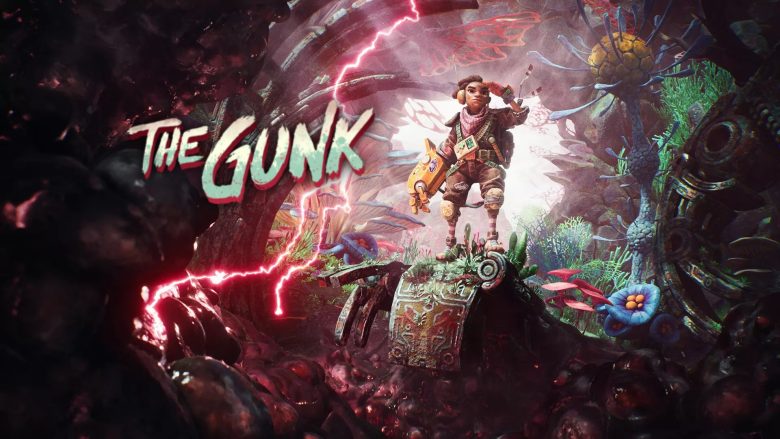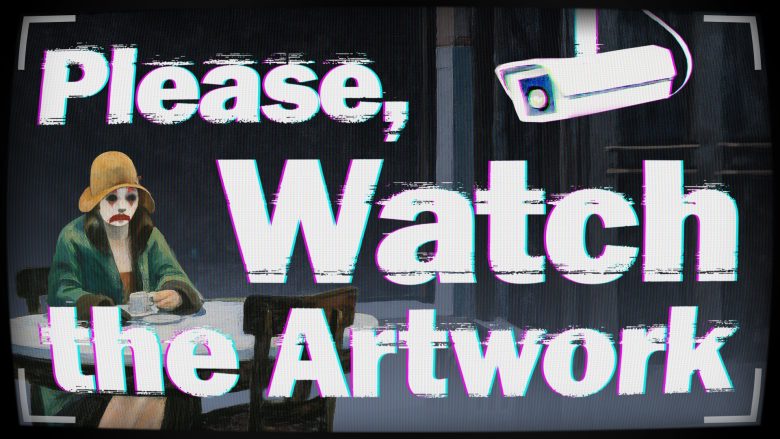Charon guides you toward a secret the world was never meant to see.
Charon’s Staircase is a first-person psychological horror that blends investigation, sustained tension, and symbolic imagery into a bleak, unsettling experience. Developed by Indigo Studios and published by SOEDESCO, the game stands out for its dense narrative, unrelenting atmosphere of oppression, and ability to provoke profound unease through claustrophobic environments and a story that interrogates guilt, obedience, and deception.
Set in an alternate world in which a totalitarian regime ruled central Europe, Charon’s Staircase casts the player as Desmond, a government operative charged with destroying compromising evidence of a dark past. What begins as an administrative order soon becomes a nightmarish sequence of chilling discoveries and moral reckonings. The game does not confine itself to political or supernatural horror: it stages a psychological journey that probes blind obedience, the erosion of humanity and the fine line between duty and complicity.
The game’s introduction is calibrated with deliberate slowness and precision. Its measured tempo immerses the player in an atmosphere that allows no distractions: every step, every collected item and every document read helps to build an ever-darker, more disturbing context. Horror in Charon’s Staircase is more conceptual than visual; it manifests in the dawning awareness that something terribly wrong occurred, and that the traces of those atrocities remain, buried beneath the dust of time and propaganda. From the outset the game conveys the sense of being in a place contaminated not only physically but morally.
The protagonist moves through decaying spaces, shrouded in shadow and silence, where the creak of floorboards or the groan of a door amplifies the presence of a past that refuses oblivion. The player is not cast as a hero but as a witness – and that inversion of the usual role heightens the experience’s intensity and introspective quality.
The oppressive atmosphere is central to the game’s appeal: environmental design, narrative pacing, and the handling of light and sound all contribute to a persistent tension – an expectancy that rarely culminates in sudden panic but rather settles slowly, insinuating itself into the player’s mind. This is an horror that whispers rather than explodes, that unnerves not by darkness itself but by what might be concealed within it.
Charon’s Staircase encourages contemplation rather than instant reaction. Players do more than navigate haunted spaces; they move through visual metaphors of guilt, moral decay, and repression. The “staircase of Charon” emerges as a symbol of inward descent – a passage toward truths that may be better left undiscovered, and perhaps even condemnation. With its deliberate pacing and richly layered aesthetic, the game firmly establishes itself among independent works that value the psychological and philosophical dimensions of horror over mere spectacle.
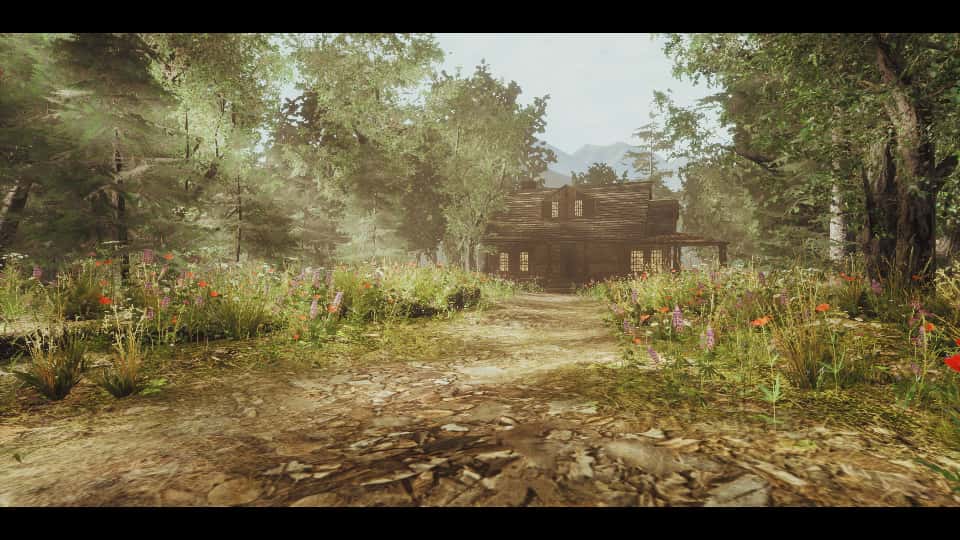
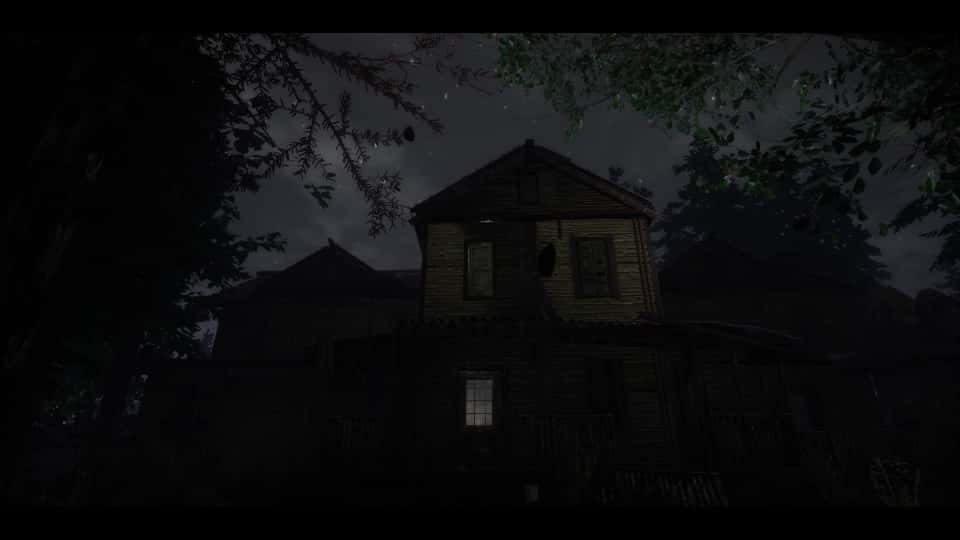
Creative Freedom
The project originates from the small Spanish studio Indigo Studios, an independent outfit that in recent years has demonstrated a notable ability to create immersive, atmosphere-rich experiences on limited resources.
Charon’s Staircase is a natural evolution of the team’s artistic approach: an environment-driven horror that privileges psychological tension and the symbolic use of space. Despite the studio’s modest size, the artistic care and stylistic coherence on display are striking – evidence of a clear, consistent creative vision.
Indigo Studios seamlessly blends cinematic and game design languages. The environmental design and the careful staging of pivotal sequences reveal a sensibility more aligned with art cinema than with mainstream commercial fare. The result is an experience to be “felt” before it is “played”: a slow accretion of visual, sonic and textual details that constructs a plausible, disturbing world. The team’s work demonstrates a strong interest in visual narrative, metaphor and the symbolic weight of setting.
Supporting the studio in publishing and distribution is SOEDESCO, the Dutch publisher known for championing auteur-leaning independent titles. SOEDESCO’s experience and international distribution network have allowed Charon’s Staircase to reach a broader audience while preserving the developer’s creative autonomy. This partnership proves an ideal balance: technical resources and visibility on one side, and artistic freedom on the other.
The production of Charon’s Staircase reflects the passion and determination of creators intent on telling complex stories in a personal manner. Absent a triple-A budget, the game nonetheless projects a strong and recognisable identity. Attention to cinematography, lighting, narrative pacing and overall art direction demonstrates an uncommon level of commitment within the independent scene. SOEDESCO’s sensitivity to this type of project has helped bring forth a title that, though aimed at a niche audience, stands out for its maturity and stylistic coherence.
Charon’s Staircase is more than a video game; it is a statement of purpose – evidence that a small team can confront weighty themes such as totalitarianism, guilt, and the distortion of historical memory, transforming them into a deeply unsettling, thought-provoking interactive experience.
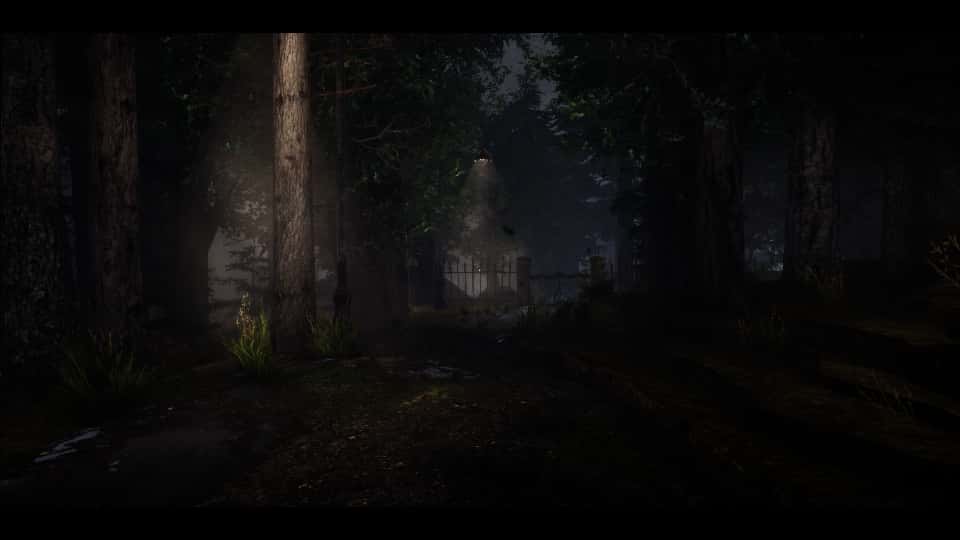

A Plot Turned Inside-Out
Charon’s Staircase unfolds as a dark, intricately layered investigation set in an alternate reality dominated by an authoritarian regime reminiscent of twentieth-century European dictatorships. Players assume the role of Desmond, a government agent tasked with a seemingly straightforward mission: recover and destroy a cache of documents that could expose the crimes of the totalitarian Oack State. What begins as a routine operation soon spirals into a harrowing descent into horror, moral compromise, and self-confrontation.
Desmond’s journey begins at Oack Grove, a remote estate of derelict buildings, abandoned sublevels, and shadowed laboratories. As he explores, the true nature of the regime emerges: atrocities carried out in the name of progress, and forbidden experiments known as “Project Alpha” – a chilling attempt to engineer a “pure” breed of obedient, emotionless humans, blending political control with biological manipulation.
Following orders, Desmond collects documents and testimonies, but each discovery chips away at his certainty and loyalty. Through letters, recordings, and found objects, the narrative weaves a tapestry that oscillates between rational investigation and supernatural overtones, leaving players unsure where science ends and the uncanny begins.
The eponymous “staircase of Charon” becomes a powerful symbol: a descent into the inferno of the past and a reflection of Desmond’s own inner journey. Haunted by visions, apparitions, and the lingering echoes of the regime’s victims, the boundary between reality and hallucination grows increasingly fragile, prompting the question of whether these phenomena are truly supernatural – or merely the projections of a guilt-ridden conscience.
The narrative unfolds at a measured, deliberate pace. Each discovery adds a piece to the intricate puzzle, building toward a crescendo of revelations that challenge the very purpose of Desmond’s mission. Its ending, deliberately ambiguous, leaves players free to interpret it as either condemnation or redemption. Charon’s Staircase is more than a chronicle of a totalitarian regime; it is an allegory of historical and personal guilt. The staircase itself leads neither to heaven nor hell, but to truth – and the price of reaching it is inevitably steep.

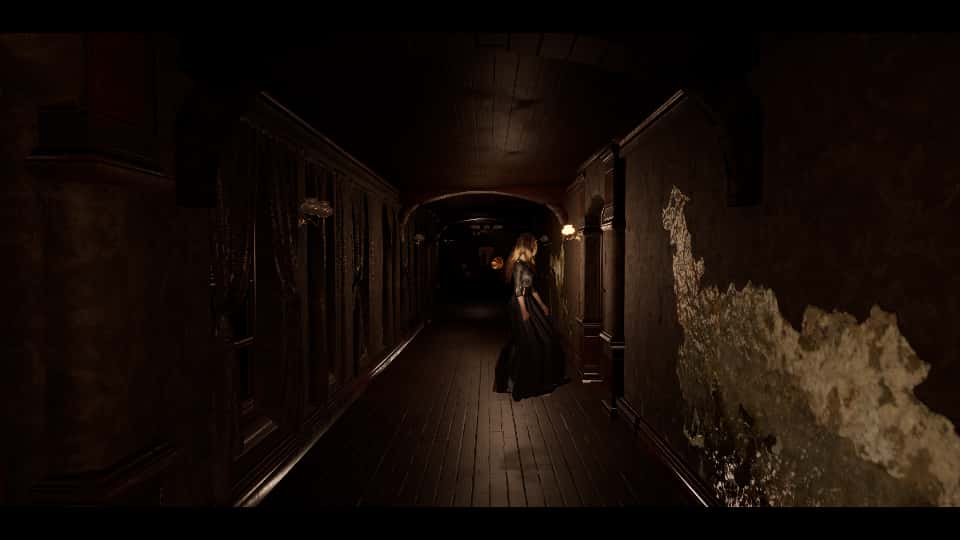
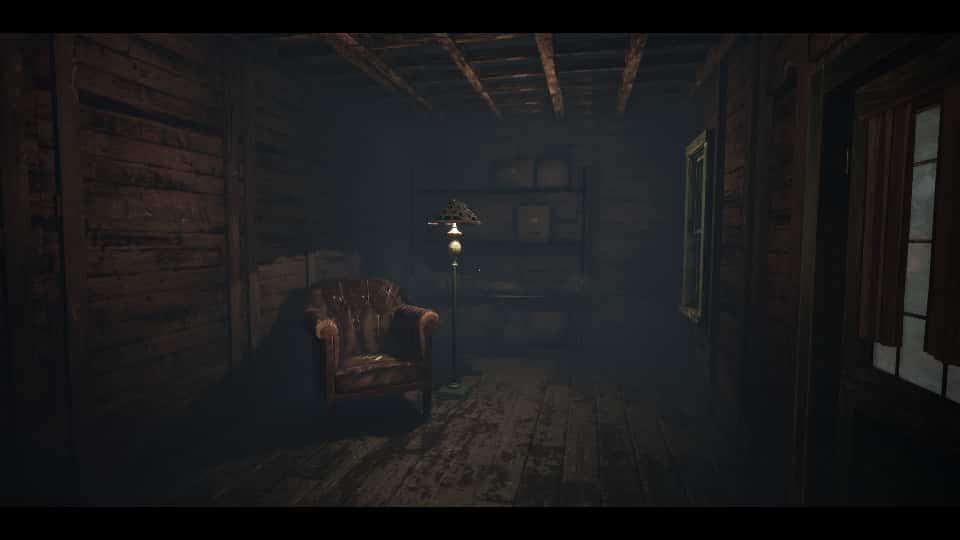
Guilt, Control and the Ghosts of a Fallen State
The game’s narrative is one of its most ambitious and structurally accomplished features. At its heart lies the theme of collective guilt, rendered through the recurring metaphor of political and scientific “purification.” The Oack State is not merely a backdrop but a presence: omnipresent, suffocating and bureaucratically voiced, its authority lingering in architecture, paper and procedure even after its apparent fall. The whole experience is steeped in the sense of a past that will not lie down.
A key motif is blind obedience. Desmond stands for the ordinary functionary who, shielded by duty, becomes complicit in a system whose full brutality he never really grasped. His arc is one of painful awakening: every document, testimony and relic gradually re-educates him in disillusionment. The player watches that slow transformation – from executor, to witness, and finally to someone who must answer for what they have allowed.
The game deliberately uses the Charon myth as an interpretive frame. The ferryman’s staircase is more than a set-piece: it is a passage from ignorance to knowledge, from conformity to conscience. Desmond’s descent is literal and metaphorical, evoking a Dantean journey through layers of complicity and culpability rather than a simple supernatural trial.
Control and dehumanisation are treated with a measured but penetrating hand. The Oack State twists science and belief into instruments of coercion, turning ethics themselves into tools of domination. Its victims are never reduced to mere data points: they appear as bodies, remnants and echoes, reflecting a distinctly modern erosion of identity – the human cost of ideological purity made bureaucratic.
Stylistically, the game excels in environmental storytelling. Little exposition is needed; peeling paint, abandoned apparatus and the angle of light across a derelict corridor speak more eloquently than dialogue ever could. The player becomes an archaeologist of moral collapse, assembling the fragments of a civilisation that unmade itself in pursuit of an impossible ideal.
Ultimately, Charon’s Staircase poses a stark question about historical memory: can the past ever truly be erased? Even as Desmond burns records, he cannot unsee what he has uncovered. Memory, in this world, becomes a sentence – a weight that cannot be lifted, and a reminder that the reckoning with truth is always costly, unavoidable and profoundly human.
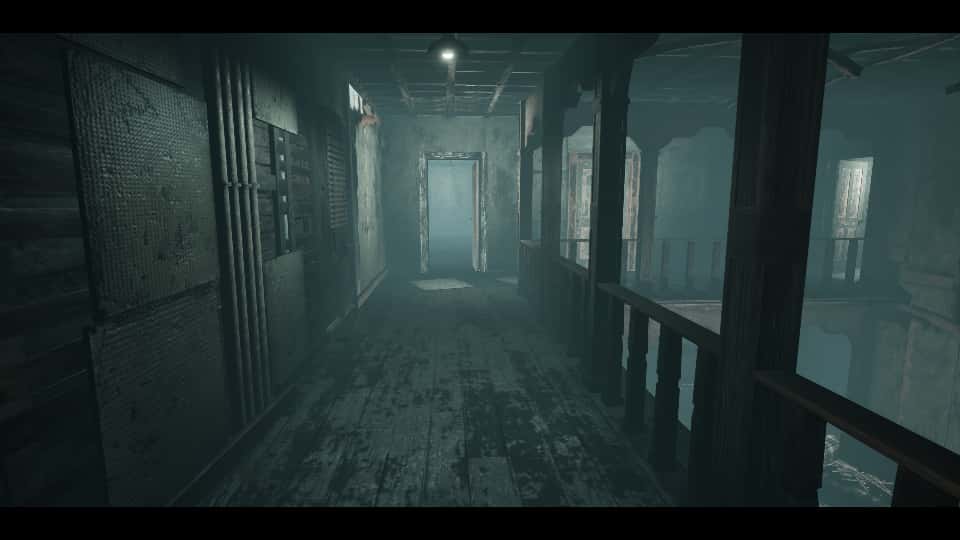

A Symphony of Rust and Silence
Technically, Charon’s Staircase wears its indie pedigree on its sleeve but often turns constraint into character. Powered by Unreal Engine 4, the game leans heavily on dynamic lighting and volumetric effects to fashion spaces that feel theatrically composed and narratively purposeful, even if texture fidelity occasionally betrays its modest budget. Lighting is the standout: chiaroscuro dominates key scenes, with shafts of light slicing through mist or filtering through grimy glass, suggesting presences the engine never needs to render explicitly.
The environments are rendered with a care that belies the studio’s size. Metal corridors, ruined laboratories, interrogation rooms and abandoned offices are populated with tactile detail – yellowed documents, cracked photographs, rusted instruments – each prop working as a tiny cog in the story machine. The architecture reads like a monument to bureaucratic and scientific madness: spaces that look lived-in, then emptied and finally ransacked by time.
Indigo Studios’ art direction favours a desaturated, sombre palette: browns, deep greens and greys dominate, punctuated by the occasional flare of red or orange to signal danger or emergent truth. The visual vocabulary evokes dirty realism and industrial decay, with hints of brutalist geometry and Eastern European state complexes, which helps to root the game’s aesthetic in a recognisable – and unsettling – vernacular. Animation and character modelling are where the limitations are most visible. Movements are restrained and at times a little stiff, but they are serviceable: the design deliberately sidelines overtly cinematic animation in favour of slow, methodical exploration. Performance is generally stable on mid-range hardware, and load times are kept in check thanks to competent optimisation.
Particular credit belongs to the interior design. Levels evolve narratively: upper floors feel ordered and well-lit – the illusion of control – while lower levels narrow, warp, and constrict, the very geometry reflecting psychological contraction. In this coupling of form and function, the game finds its strongest voice.
In sum, Charon’s Staircase demonstrates that atmosphere is a matter of vision more than budget. Smart use of the engine, disciplined art direction and careful environmental composition produce a visually intense, thematically coherent experience that communicates horror through shape, light and texture as much as through plot.

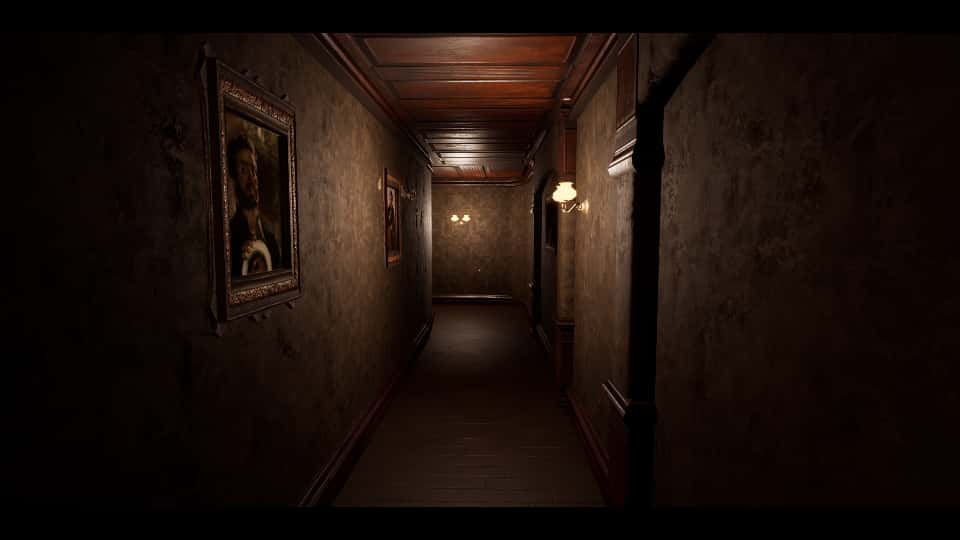
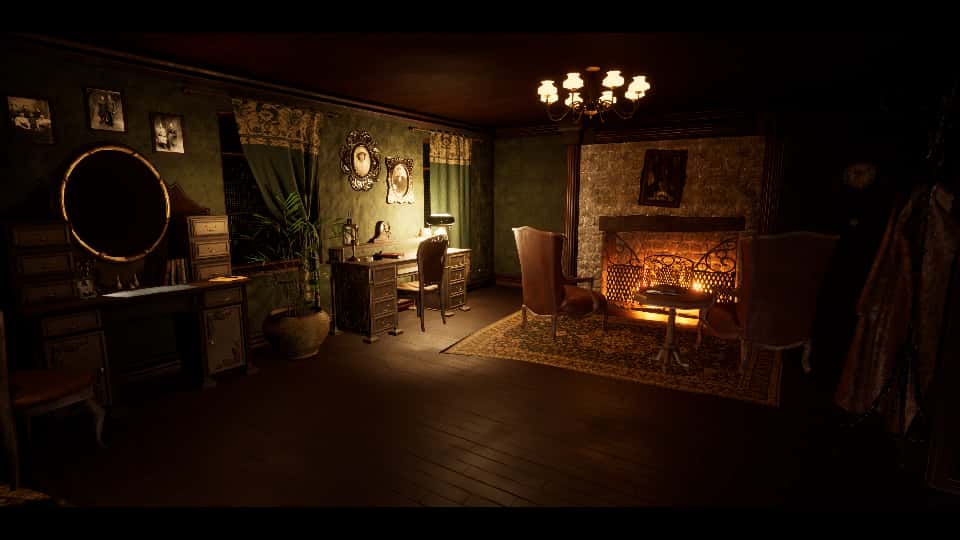
The Lingering Hum of Horror
The audio of Charon’s Staircase stands as one of its most remarkable achievements. If the visuals supply the body, sound supplies the soul: restless, fragmented and quietly unnerving. Indigo Studios has paid meticulous attention to acoustic design, fully aware that in psychological horror sound is the element most likely to insinuate itself into the player’s mind and sustain tension even in apparent stillness.
The score relies on ambient textures and restrained dissonance rather than recognisable themes. A shifting, near-imperceptible carpet of metallic hums, electronic throbs and distant breaths blurs the line between music and environment, collapsing diegetic and non-diegetic sound into a single, unsettling field.
Each location possesses its own acoustic identity: corridors rumble with metallic echoes, subterranean chambers amplify footsteps into percussion, and outside the wind and rain press against the world like a hand. Silence is used as carefully as noise. Long stretches of hush are punctured by a creak, a distant thud or an unexpected intake of breath, moments that snap the player to attention. Voice work adds another layer: performances are deliberately cold and clipped, often processed or filtered to reinforce a sense of bureaucratic inhumanity, while private messages and victim testimonies supply fragile, tragic counterpoints.
A particularly successful element is the use of spatial audio: with a good sound system or headphones, players can precisely locate sound sources, intensifying immersion. Sound design exploits three-dimensionality to both disorient and orient the player, prompting doubt about what they hear.
In short, the audio of Charon’s Staircase is a work of precision and restraint. It does more than fill space: it orders it, breathes in it and lingers in the mind. The fear it evokes is not the startle of a cheap jump-scare but the slow, accumulative dread that grows step by step as you descend the staircase.


World-Building and Narratively Driven Gameplay
The world-building of Charon’s Staircase forms a meticulously crafted mosaic of narrative and symbolism. It may not be vast in physical scope, but it is dense in conceptual and atmospheric depth. Every environment, architectural detail, and discovered document contributes to a coherent, unsettling universe where the regime’s history and the protagonist’s story are inextricably intertwined. Oack Grove, the estate at the heart of the game, is far more than a backdrop: it functions as a silent, decaying character, its story written in the marks of time. Empty rooms, ruined laboratories, and desks littered with abandoned instruments hint at past horrors whose traces refuse to fade. Each explored area reveals fragments of a past that resists erasure, as if the estate itself is a relic of a society undone by madness.
Gameplay revolves around a careful balance of exploration, puzzle-solving, and narrative progression. The central objective is investigative: players search environments for clues, codes, and documents. Puzzles, while rarely taxing, are seamlessly integrated into the story and maintain a rhythm to exploration. Interaction mechanics are deliberately functional – opening drawers, operating machinery, reading files, and deciphering code – all reinforcing immersion and the sensation of active discovery. The game’s tempo is measured and deliberate; it prioritizes atmosphere over action. Narrative tension rises gradually, punctuated by brief moments of calm, creating a flow that keeps the player engaged without lapsing into chaos. Horror emerges from understanding rather than confrontation, urging players to observe, reflect, and decode.
Equally notable is the environmental coherence: every object and document has a narrative purpose. There are no arbitrary collectibles or purely decorative props; everything reinforces the broader portrait of the world and its ideology. This meticulous consistency ensures that even the quietest, most static spaces are imbued with meaning, turning exploration into an act of discovery and interpretation.
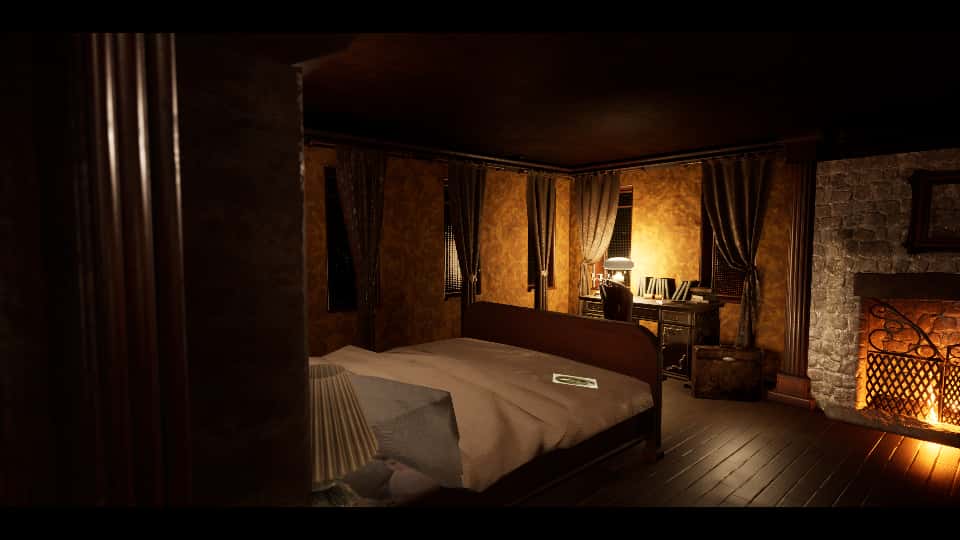

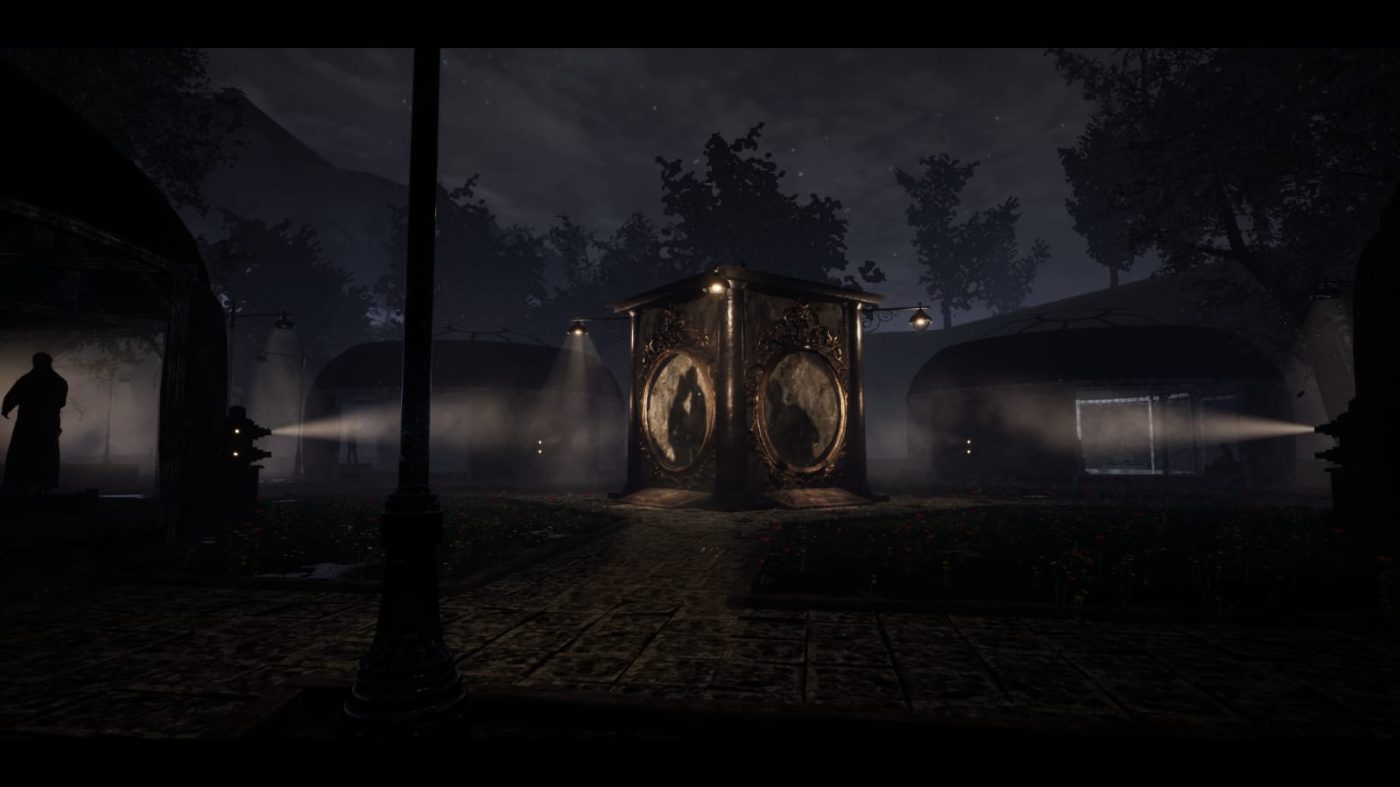
Restraint and Resonance: The Strengths of Charon’s Staircase
From a critical perspective, Charon’s Staircase deserves genuine respect for its artistic coherence and thematic ambition. Despite obvious budgetary constraints and occasional technical stiffness, the game’s narrative architecture and art direction feel assured and purposeful. Indigo Studios eschews easy genre tropes in favour of a measured, almost literary tone, treating its subject matter with seriousness and gravitas.
The game’s deliberate, unhurried pace and scarcity of set-piece action may not suit all tastes, yet these are conscious design choices: the experience privileges reflection and atmosphere over spectacle. This is a horror of the interior – a meditation on guilt and responsibility that encourages contemplation rather than relying on cheap shocks. Technically, the weakest aspects lie in animation and character modelling, which can at times feel stiff; yet the strength of the art direction, together with the precision of the sound design, largely compensates, sustaining a consistently immersive and compelling mood throughout.
Taken as a whole, Charon’s Staircase demonstrates how the medium can grapple with complex themes – historical memory, propaganda, and dehumanisation – without relinquishing its identity as a game. It demands patience and thoughtful engagement; those who invest themselves will encounter an experience that is at once intellectually enriching and quietly disquieting.


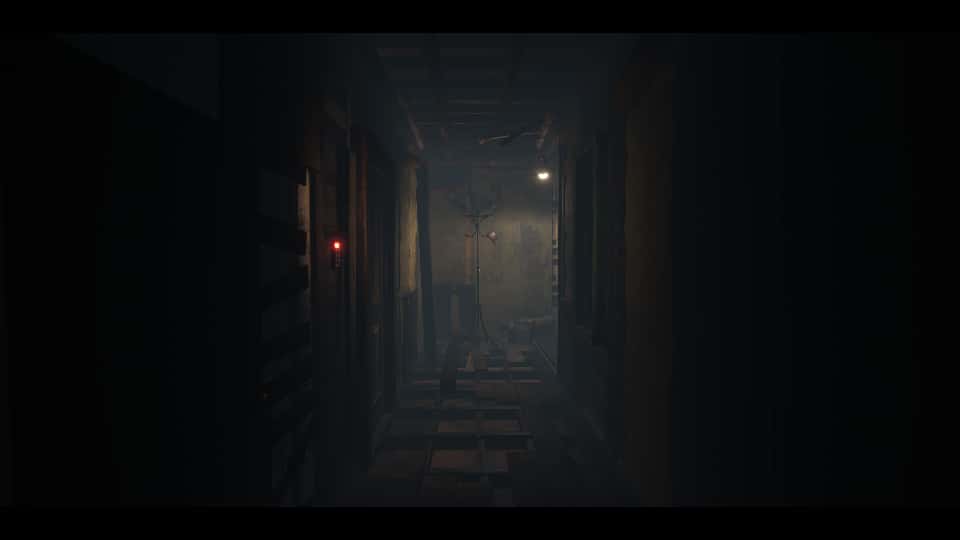
Charon’s Staircase
PRO
- Rich, symbolic narrative with moral weight;
- Cohesive, evocative art direction;
- Masterful sound design and use of silence;
- Layered environmental storytelling;
- Strong interplay between political mystery and psychological horror;
- Ambiguous, thought-provoking ending.
CON
- The slow, deliberate pacing may put off less patient players;
- Animations and character models can be noticeably stiff;
- Puzzles are serviceable but may feel slight to veterans of the genre.

